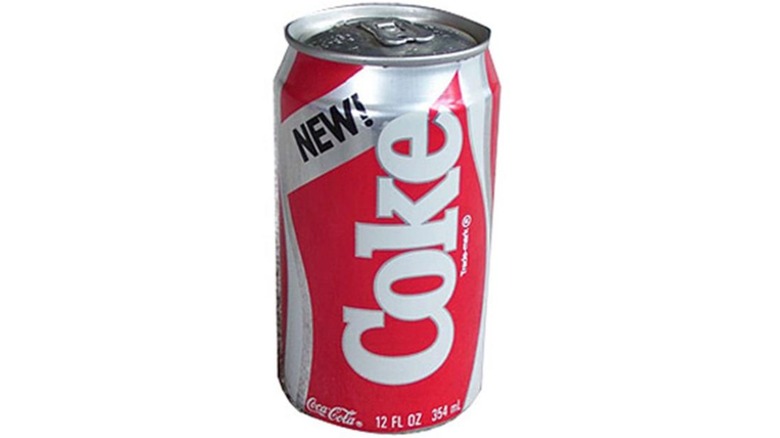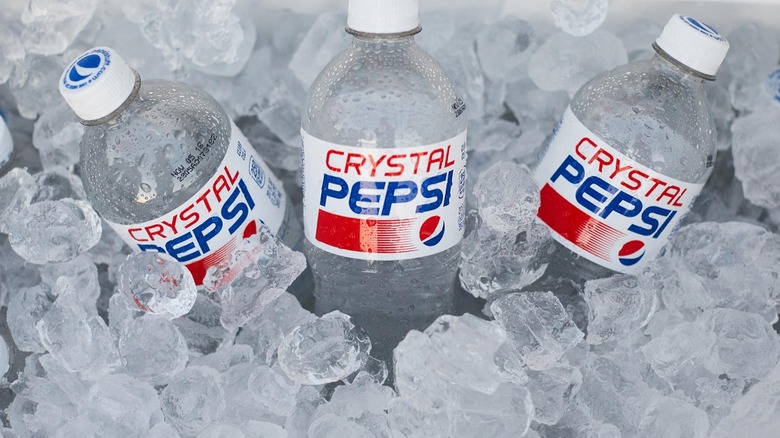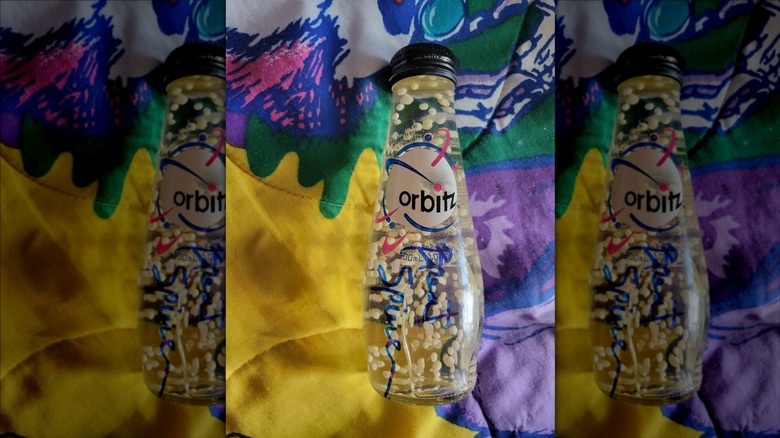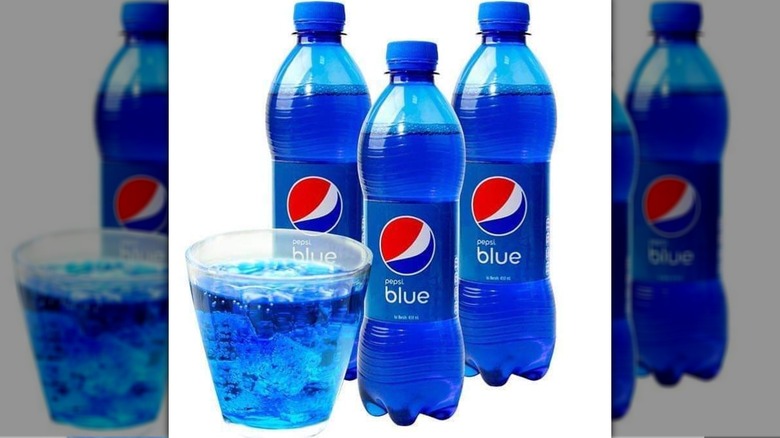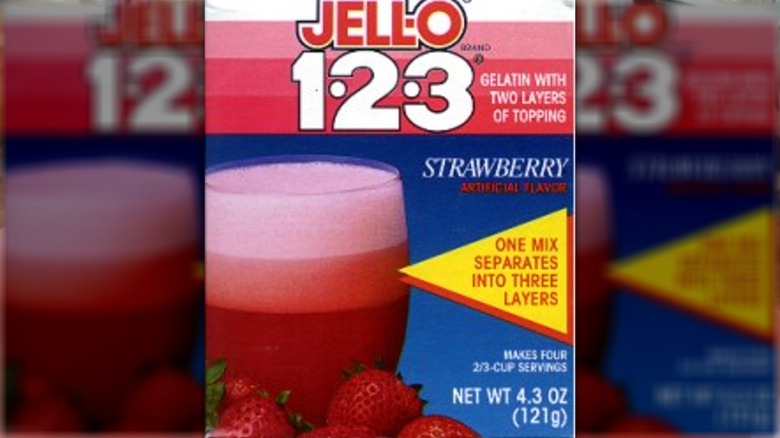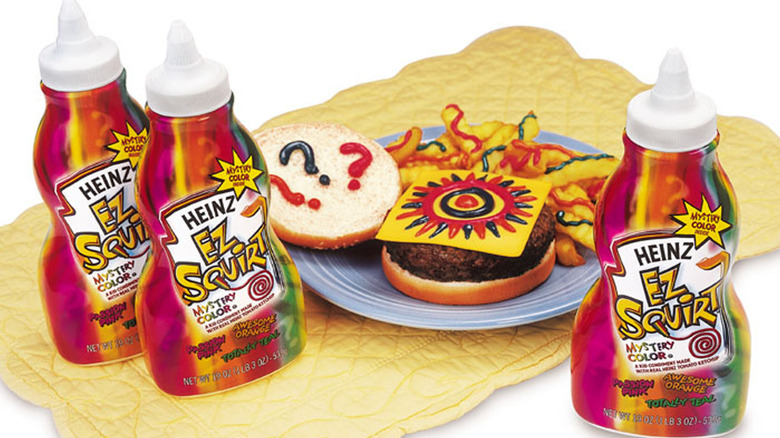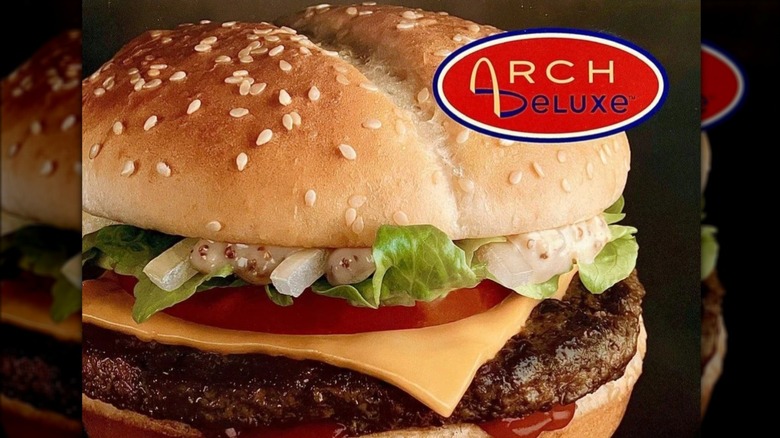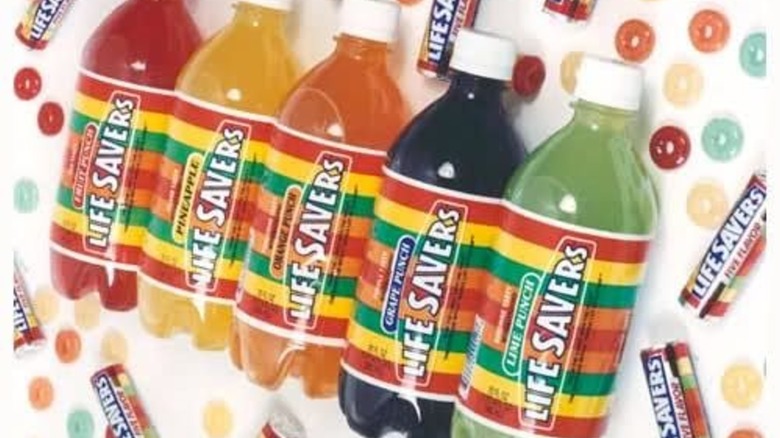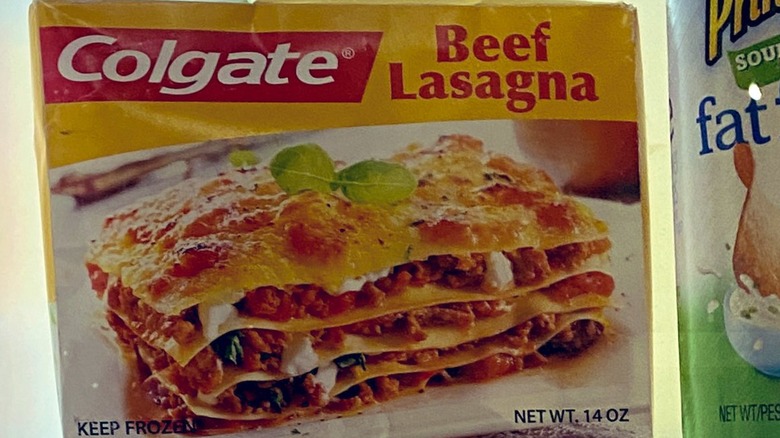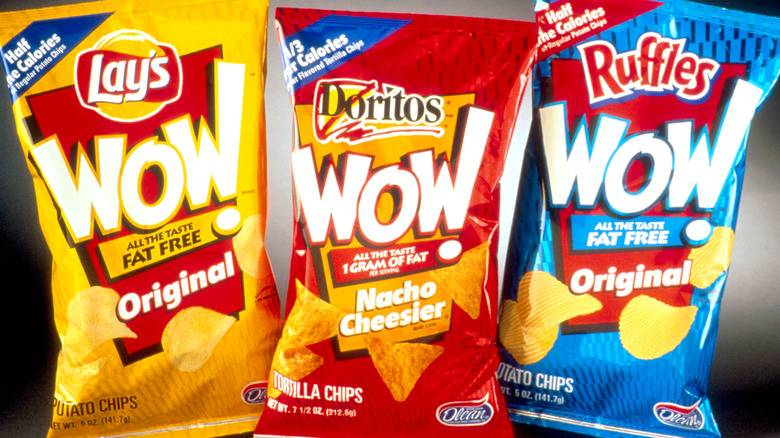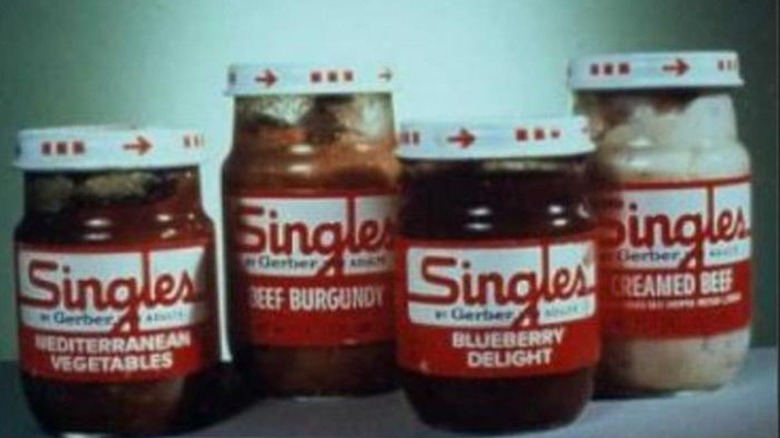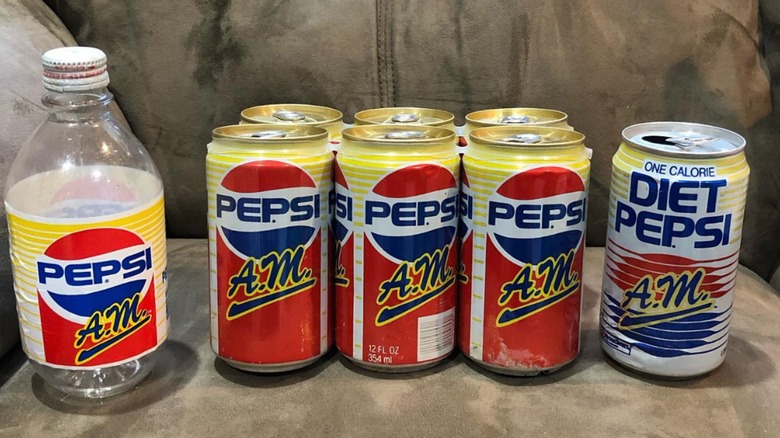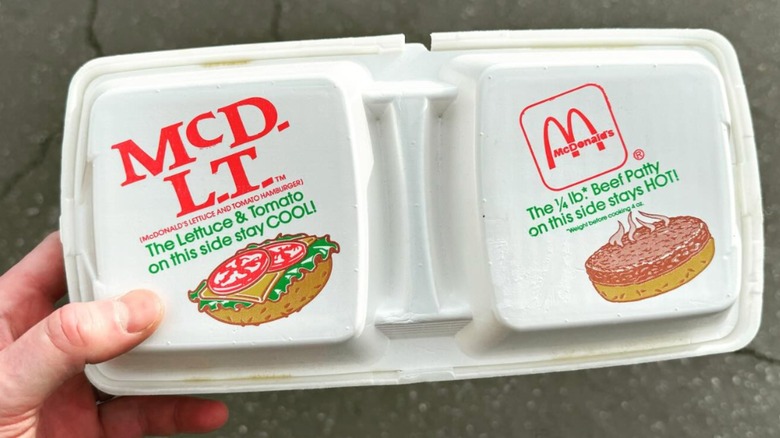13 Retro Foods That Completely Flopped
Food history is littered with bold experiments that went horribly wrong. For every Oreo or Big Mac that won over taste buds worldwide, there are a dozen misfires that probably seemed genius in the boardroom but just never clicked with consumers. The 1980s and 1990s in particular produced some of the strangest culinary detours, as companies chased novelty, color, and quirk to stand out in crowded supermarkets.
Sometimes, the products were simply ahead of their time. Other times, the ideas were baffling from the start. And then there are those foods that launched with hype, only to collapse under the weight of their own weirdness once people actually tasted them. Yet even in failure, some of these flops became legends. They are remembered not for stellar flavor, but for the confusion, controversy, and even comedy that ensued after their arrival. Here are 13 of the most unforgettable epic food fails that show how even billion-dollar corporations can totally misjudge what people are willing to eat or drink, much less buy.
New Coke
When Coca-Cola decided to tweak its century-old formula in 1985, it expected cheers. Instead, New Coke triggered outrage. The sweeter version was designed to compete with Pepsi in blind taste tests, and while tasters liked it in small sips, fans were furious when the familiar flavor vanished from shelves. Protests erupted, hotlines were flooded with complaints, and news outlets covered the soda crisis like it was breaking politics.
Coca-Cola executives underestimated the emotional bond people had with their soda, and the backlash became a case study in marketing hubris. Within just 79 days, the company backpedaled, reintroducing Coca-Cola Classic. While New Coke lived on briefly in select markets and even made cameo returns in pop culture decades later, today it is remembered as one of the most famous food failures ever — not necessarily because no one liked it, but because people loved the original too much to let it go.
Crystal Pepsi
Few products screamed 1990s optimism quite like Crystal Pepsi. Marketed as a caffeine-free alternative to your standard cola, the clear soda was supposed to feel lighter and more refreshing. Its iconic Super Bowl ad featuring Van Halen's "Right Now" captured the zeitgeist of the moment, and shelves briefly buzzed with customers clamoring for the new cola out of sheer curiosity. But once the novelty faded, these same consumers realized the flavor was oddly bland, basically like cola stripped of its caramel backbone.
Critics complained that Crystal Pepsi looked like Sprite but without the kick of a lemon-lime soda, and it seemingly confused people far more than it delighted them. Despite a massive promotional push, sales fizzled after just a couple of years. The soda has since enjoyed nostalgic limited-time comebacks, mostly as a wink to its status as a legendary flop. Its story is less about terrible taste than about a mismatch between marketing promise and consumer expectation.
Orbitz
In 1997, Clearly Canadian launched Orbitz, a soda that looked like it came straight from a sci-fi movie set. The clear bottles were filled with brightly colored liquid dotted with floating gelatinous spheres suspended in place, a bit like little lava lamps you could drink.
As the name suggested, the idea was that the extraterrestrial novelty of Orbitz would make the beverage a must-buy. The reality was confusing, as Orbitz was basically a syrupy drink with an odd medicinal flavor that just baffled consumers. The gelatin orbs lacked the appeal of tapioca pearls, and instead just kind of slid down your throat, leaving many just grossed out.
Orbitz was discontinued just a few years after its launch, but its bizarre design cemented its place in junk-food lore. Today, surviving bottles are collectors' items that often pop up online as gag gifts. Like, chew on this, buddy! Though ahead of the full-on bubble tea craze, Orbitz never quite figured out how to balance novelty with taste, leaving it remembered more for its weird look than its flavor.
Pepsi Blue
Pepsi hoped to capture the attention of younger consumers with Pepsi Blue, a bright electric blue soda launched in 2002. Marketed as a berry cola, it leaned into extreme Y2K energy, with ads featuring pop groups and stars like Papa Roach and Britney Spears, with plenty of edgy visuals. But once people opened a bottle, disappointment set in.
The taste was polarizing, to say the least. It was described by some as being similar to artificial raspberry cotton candy and by others as cough syrup. Combined with its radioactive look, the soda felt more like a novelty rather than a go-to drink. By 2004, it had disappeared from shelves in the U.S., though it lingered in some overseas markets.
Despite the flop, nostalgia kept Pepsi Blue alive in pop culture, and Pepsi even brought it back for a short revival in 2021. Still, its original run is remembered less for refreshment and more for staining tongues bright blue.
Jell-O 1-2-3
Jell-O 1-2-3 seemed like it would be anyone's kitchen magic dream. One mix that transformed into three layers as it chilled, featuring a bottom of firm Jell-O gelatin, a middle of mousse, and a creamy topping. What's not to love?
Introduced in 1969, its commercials stressed the unique idea that the dessert made itself. However, not everyone was impressed by its Jell-O wizardry. Some complained about its lack of ease to create, as well as its odd texture and chemical taste. Sales dwindled until the product was finally discontinued in 1996. Today, retro food fans remember Jell-O 1-2-3 fondly, with recipes still circulating online to recreate that iconic layered look. Its failure wasn't necessarily immediate, but its demise shows how quickly novelties (even the coolest, colorful Jell-O ones) can lose their charm.
Heinz EZ Squirt Colored Ketchup
At the turn of the millennium, Heinz tried to mix things up and inject some newfound novelty into ketchup. The idea was to infuse dazzling levels of consumer delight by dyeing the iconic traditional tomato condiment with neon colors.
EZ Squirt bottles came in shocking shades like Blastin' Green, Funky Purple, and Stellar Blue, with kid-friendly squeeze bottles featuring nozzles perfectly shaped for delightful doodling on plates. Children loved the gross-out factor of dipping fries in slime-green ketchup, and Heinz sold an impressive 25 million units. Presumably, parents were far less charmed. The ketchup tasted the same, but the sight of blue goo on a burger is enough to ruin appetites.
After the novelty wore off, sales plummeted, and by 2006, the product was quietly shelved. Still, it remains one of the most infamous examples of food marketing targeting kids while alienating adults. Some nostalgic fans have even tried to recreate it at home, though most will admit it was more fun to look at than to eat.
McDonald's Arch Deluxe
McDonald's has built an empire on affordability and kid-friendly marketing, so its attempt at a more sophisticated burger was a bold gamble. The Arch Deluxe, launched in 1996, featured peppered bacon, lettuce, tomato, and Dijon-mayo on a potato bun. Ads pitched it as a burger for grown-ups, showing kids turning up their noses at the supposedly refined flavors.
Sounds okay enough, but there was a problem. Nobody, adults included, tends to visit McDonald's for a sophisticated meal. Kids weren't impressed either. The company spent roughly $200 million promoting it, making the Arch Deluxe one of the costliest flops in fast food history.
While some fans remember the flavor fondly, the item vanished quickly, and McDonald's quietly moved back to what it did best. You guessed it: simple burgers with mass appeal. Today, the Arch Deluxe is remembered as McDonald's biggest failure and endures as a cautionary tale of a brand swaying too far from its bread and butter by trying to reinvent its identity too dramatically.
Life Savers Soda
Candy-flavored soda seemed like a sweet slam dunk when Life Savers tried it in the early 1980s. With bold packaging and flavors meant to replicate the iconic hard candies, the line hit shelves with high expectations. But when people cracked a can, they were met with a cloying sugar bomb.
Some unimpressed reviewers thought it was too syrupy. Others went so far as to classify the new soda as a drinkable kind of candy that was actually quite undrinkable. Much to the brand's dismay, it turns out that consumers who loved Life Savers as a pocket treat had no interest in guzzling them by the ounce. Thus, the product disappeared quickly.
Today, mentions of Life Savers Soda are mostly limited to lists of baffling brand extensions. Life Savers Soda shows that not all crossovers make sense, and just because something works and is a big success as candy doesn't mean it will translate to a sippable, or sales-worthy, drink.
Colgate Kitchen Entrees
When you think of Colgate, toothpaste is the only real logical thing that comes to mind, right? That logic is probably why you won't find Colgate Kitchen Entrees in grocery store freezers today. When the company branched out to include a line of frozen meals, the idea was presumably to extend the Colgate brand from its limited dental hygiene scope into overall lifestyle, but it feels like a stretch to assume shoppers would embrace the company synonymous with brushing their teeth for another, less minty element of their daily routine.
It's up for debate when Colgate Kitchen Entrees launched. Some believe the line debuted in the 1980s, while others say it debuted in the 1960s. There's some conjecture over whether the line even existed in the first place. Colgate has denied that the Colgate Beef Lasagna in particular was ever an actual thing. However, publications from the 1960s do cite a line of dried chicken and crabmeat entrees sold under the Colgate Kitchen name, with Television Age Magazine reporting in 1966 that the line didn't last long in the market. Regardless of the exact flavors available, Colgate Kitchen definitely counts as a flop.
Lay's Wow! Chips
Lay's Wow! Chips promised to revolutionize snacking with fewer calories, thanks to olestra, a fat substitute that can't be absorbed by the body. At the product launch in 1998, curious, hopeful, and excited shoppers flocked to try them, intrigued by the allure of a healthier take on chips.
The promise did not hold, sadly, as it wasn't long before reports surfaced of the unpleasant side effects inflicted by olestra. These range from cramps to infamous anal leakage. Yes, you read that correctly. Naturally, late-night comedians pounced, and the chips' reputation never recovered from the explosive backlash. Even with warning labels, the product couldn't quite move past the association with digestive issues.
Sales dropped, and the chips were rebranded before fading from stores entirely. Today, Lay's Wow! Chips are remembered less for their crunch and more for their unintended consequences, proving that sometimes it's better to stick to the full-fat original.
Gerber Singles
In the 1970s, Gerber thought it could expand its baby food empire by pivoting from only pursuing the pre-walking stagers to catering to adults who wanted quick, easy meals. The result of this brainstorming was jars of pureed entrées like beef stew and meatloaf aimed specifically at young singles living life fast and on the go, promoted with the tagline "We were good for you then, we're good for you now" (via The La Crosse Tribune).
This line of baby food for adults was known as Gerber Singles and, unsurprisingly, the concept was doomed. Shoppers recoiled at the idea of eating adult-sized baby food, and the unappetizing aesthetics of the jars didn't help. Advertisements pitched them as quick and easy meals, but consumers were seemingly neither ready nor willing to regress to the baby diet.
This was apparent by the fact that Gerber Singles were axed after about three months. Even today, the very idea makes people laugh and lives on as taunt worthy proof that not all convenience foods are created equal.
Pepsi A.M.
What's more appetizing with your morning cereal than a breakfast cola with extra caffeine pitched as an alternative to coffee? As it turns out, pretty much anything. Pepsi tried to break into the breakfast market in 1989 with a new product offering called Pepsi A.M., a soda with 28% more caffeine than regular Pepsi (but 77% less than coffee).
Early advertisements encouraged drinkers to ditch their morning cup of joe for a can of soda instead. But consumers weren't convinced. It seems like even those who loved Pepsi didn't want it at the crack of dawn alongside their cereal, considering how quickly the product faded from shelves. Maybe coffee had too strong a hold on the morning ritual for Pepsi to compete. Or maybe a breakfast soda is just borderline diabolical. Whatever the reason, Pepsi A.M. is remembered today as an ambitious but misguided attempt to change daily habits that were simply never going to budge.
McDonald's McDLT
A burger sold in special packaging that kept the hot side of your burger hot and the cool side, well, cool, sounds like a slam dunk, but the clunky Styrofoam container and lukewarm reception it received killed it. In the 1980s, McDonald's introduced the McDLT, a burger packaged in a two-part Styrofoam container. The sales hook? One half of the bun and the hot beef stayed separate from the other slice of bread, lettuce, tomato, mayo, cheese, pickles, and ketchup. This meant the veggies stayed cool and crisp until it was time to tuck into your burger.
Customers were supposed to assemble it themselves before eating. While the idea made sense in theory, the bulky packaging was arguably both inconvenient and wasteful. By the early 1990s, the McDLT was pulled from menus amid pressure from environmental groups. The Big 'n' Tasty – a similar, pre-composed burger sans Styrofoam packaging — was later released in its place. Today, the McDLT is best remembered by its enthusiastic commercials (including one featuring a young Jason Alexander, a few years before "Seinfeld") and stands as another example of over-engineering a simple meal that simply didn't need fixing.

